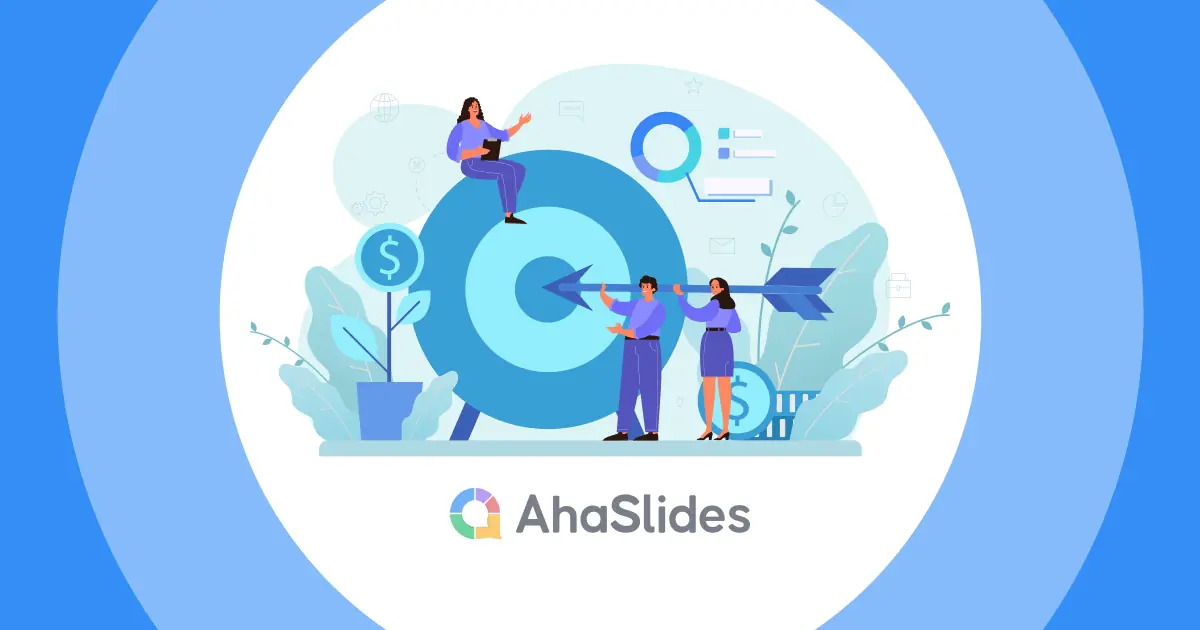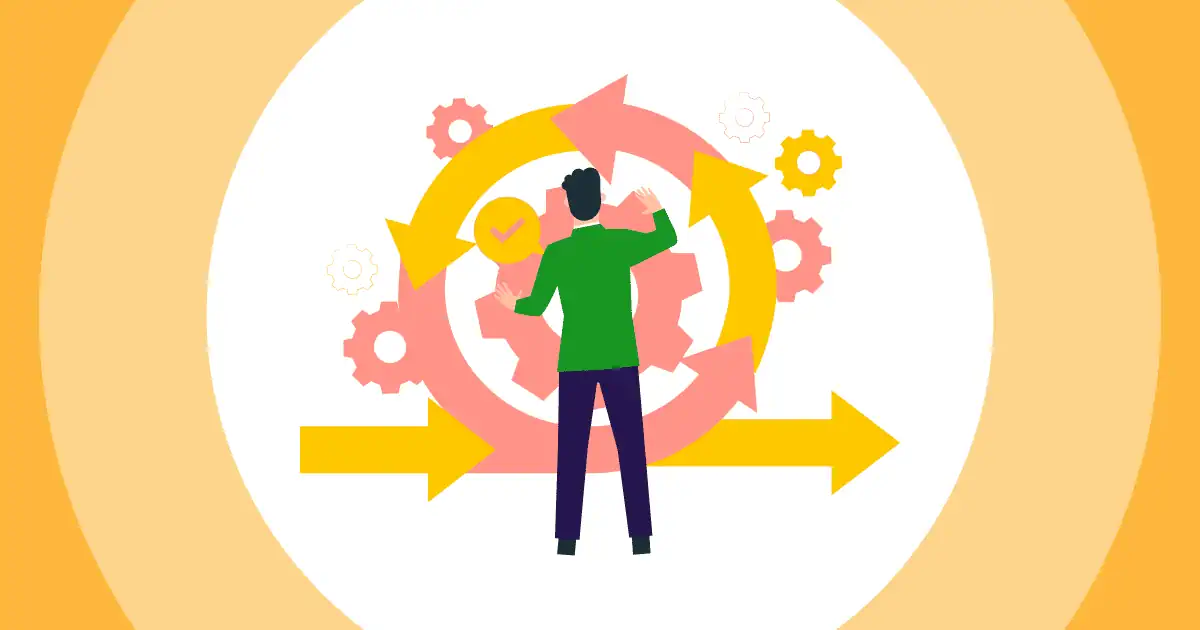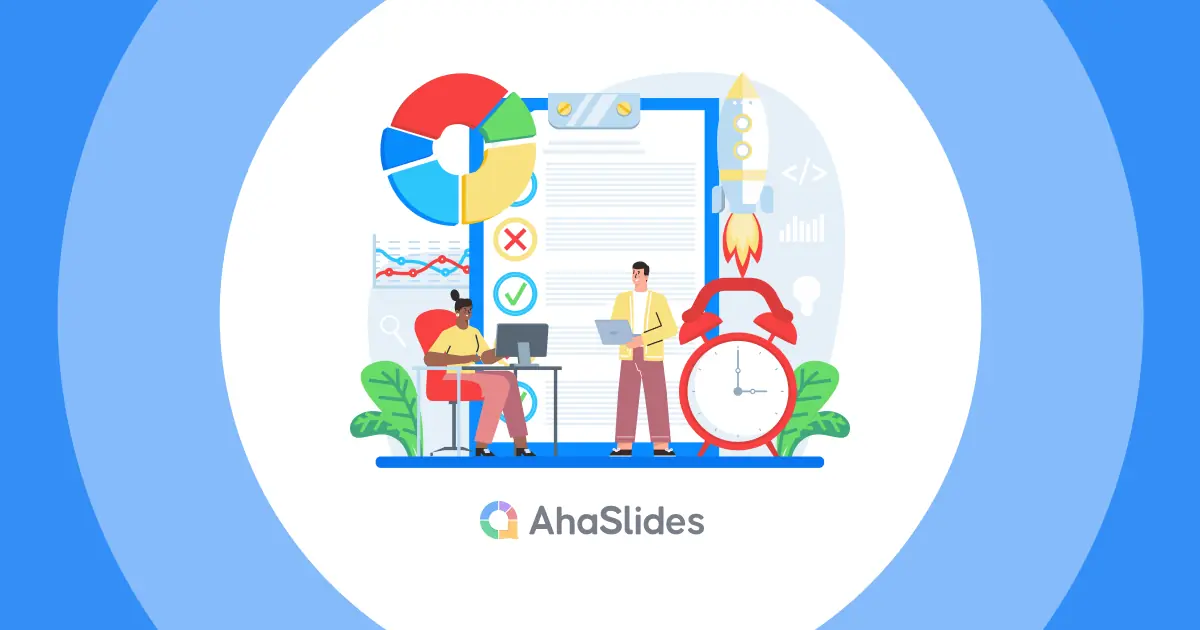Have you ever wondered how some teams manage their projects so smoothly, almost like magic? Enter Kanban, a simple yet powerful methodology that has transformed the way work gets done. In this blog post, we'll embark on a journey to demystify 'What is Kanban?' and explore how its straightforward principles can enhance productivity and streamline processes in any field.
Table Of Contents
- What Is Kanban?
- What Is a Kanban Board?
- The 5 Best Practices Of Kanban
- Tips For Using Kanban
- Key Takeaways
- FAQs About What Is Kanban
What Is Kanban?
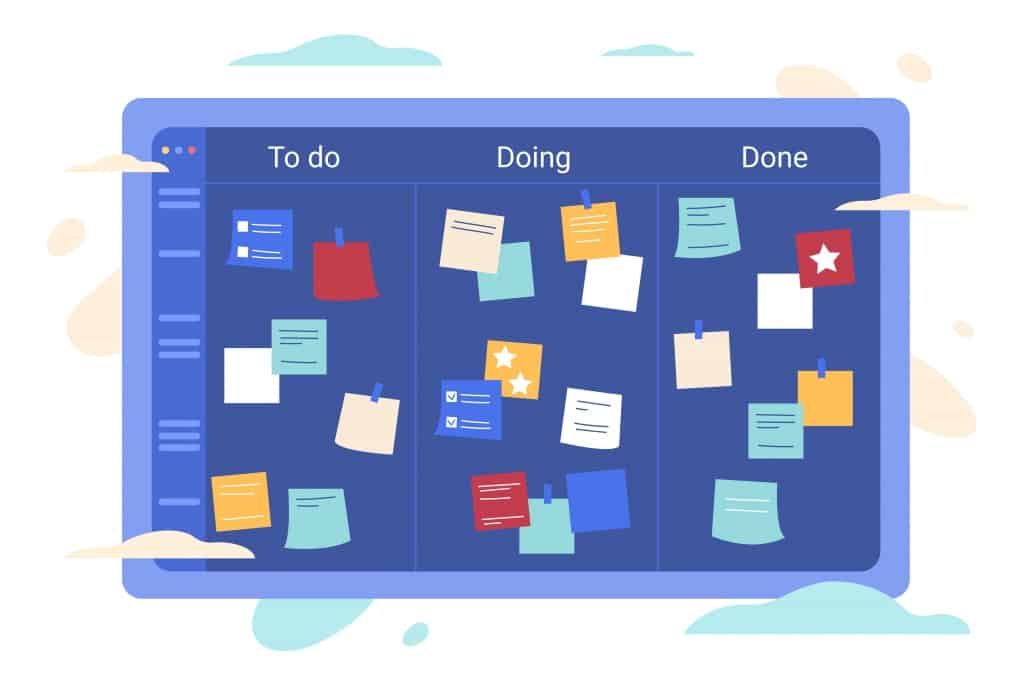
What is Kanban? Kanban, initially developed at Toyota in the 1940s, has become a widely adopted visual management system for restricting work-in-progress (WIP) and orchestrating the flow of work across various industries.
At its core, Kanban is a simple and efficient methodology crafted to optimize workflow and streamline processes. The term "Kanban," rooted in Japanese, translates to "visual card" or "signal."
Essentially, Kanban operates as a visual representation of work, employing cards or boards to communicate tasks and their respective statuses. Each card represents a specific job or activity, providing teams with a clear, real-time understanding of the progress of their work. This straightforward approach enhances transparency, making it easier for teams to collaborate and manage their tasks efficiently.
What is the difference between Kanban and Scrum?
Kanban:
- Flow-Oriented: Works like a continuous flow, no fixed timeframes.
- Visual System: Uses a board to visually track and manage tasks.
- Adaptable Roles: Doesn't enforce specific roles, adapts to existing structures.
Scrum:
- Time-Boxed: Operates in fixed timeframes called sprints.
- Structured Roles: Includes roles like Scrum Master, and Product Owner.
- Planned Workload: Work is planned in fixed time increments.
In Simple Terms:
- Kanban is like a steady stream, adapting easily to your team's way of working.
- Scrum is like a sprint, with defined roles and structured planning.
What is the difference between Kanban and Agile?
Kanban:
- Methodology: A visual management system within the Agile framework.
- Flexibility: Adapts to existing workflows and practices.
Agile:
- Philosophy: A broader set of principles for iterative and flexible project management.
- Manifesto: Guided by the Agile Manifesto, promoting adaptability and customer collaboration.
In Simple Terms:
- Kanban is a part of the Agile family, providing a flexible tool for visualizing work.
- Agile is the philosophy, and Kanban is one of its adaptable methodologies.
What Is a Kanban Board?
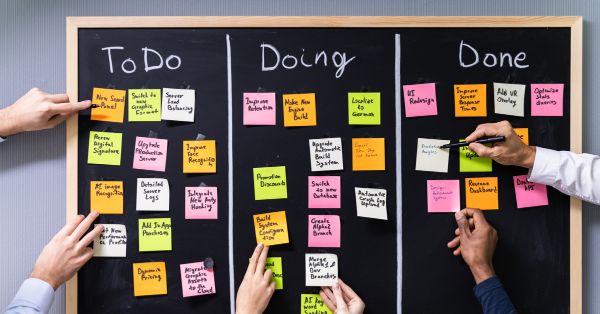
The Kanban board is the beating heart of the Kanban methodology. It has the ability to provide a visual snapshot of the entire workflow, offering teams a streamlined way to manage tasks and projects.
The beauty of Kanban lies in its simplicity. It doesn't impose rigid structures or fixed timelines; instead, it embraces flexibility.
- Picture a digital or physical board with columns representing different stages of a project— with tasks from 'To-Do' to 'In Progress' and finally to 'Done' as they evolve.
- Each task is represented by a card, also known as “Kanban cards", displaying essential details like task descriptions, priority levels, and assignees.
- As work progresses, these cards smoothly transition across columns, reflecting the current status of each task.
The methodology relies on transparency, making it easy for team members to grasp the current state of affairs at a glance. Kanban isn't just a tool; it's a mindset that encourages continuous improvement and adaptability.
The 5 Best Practices Of Kanban

Let's delve into the core practices of Kanban.
1/ Visualizing Workflow:
The first practice is all about making work visible. Kanban introduces a visual representation of your workflow through a Kanban board.
As mentioned, this board acts as a dynamic canvas where every task or work item is represented by a card. Each card moves across different columns, representing various stages of the workflow – from the initial 'To-Do' to the final 'Done.'
This visual representation provides clarity, allowing team members to see, at a glance, what's in progress, what's completed, and what's up next.
2/ Limiting Work in Progress (WIP):
The second practice revolves around maintaining a manageable workload.
Limiting the number of tasks in progress is a key aspect of Kanban methodology. This helps prevent overloading team members and ensures a steady and efficient flow of work.
By limiting Work in Progress (WIP), teams can focus on completing tasks before moving on to new ones, preventing bottlenecks and enhancing overall productivity.
3/ Managing Flow:
What is Kanban? Kanban is all about keeping work flowing smoothly. The third practice involves constantly monitoring and adjusting the flow of tasks. Teams strive to maintain a steady, predictable flow of work items from start to finish.
By managing flow, teams can quickly identify areas where work might be slowing down, allowing for timely adjustments to keep everything on track.
4/ Making Policies Explicit:
The fourth practice centers around making the rules of the game clear for everyone. Kanban encourages teams to define and make explicit the policies that govern their workflow.
These policies outline how tasks move through the different stages, what criteria define task priorities, and any other rules specific to the team's processes. Making these policies explicit ensures everyone is on the same page and helps create a shared understanding of how work should be done.
5/ Continuous Improvement:
Continuous improvement is the fifth and perhaps most crucial practice of Kanban. It's about fostering a culture of reflection and adaptation. Teams regularly review their processes, seeking opportunities to enhance efficiency and effectiveness.
This encourages a mindset of learning from experience, making small, incremental changes to improve over time.
In essence, the best practices of Kanban are about visualizing work, controlling the flow, maintaining manageable workloads, defining clear policies, and always striving for improvement. By embracing these principles, teams can not only manage their work more effectively but also cultivate a culture of collaboration, adaptability, and continuous growth.
Tips For Using Kanban
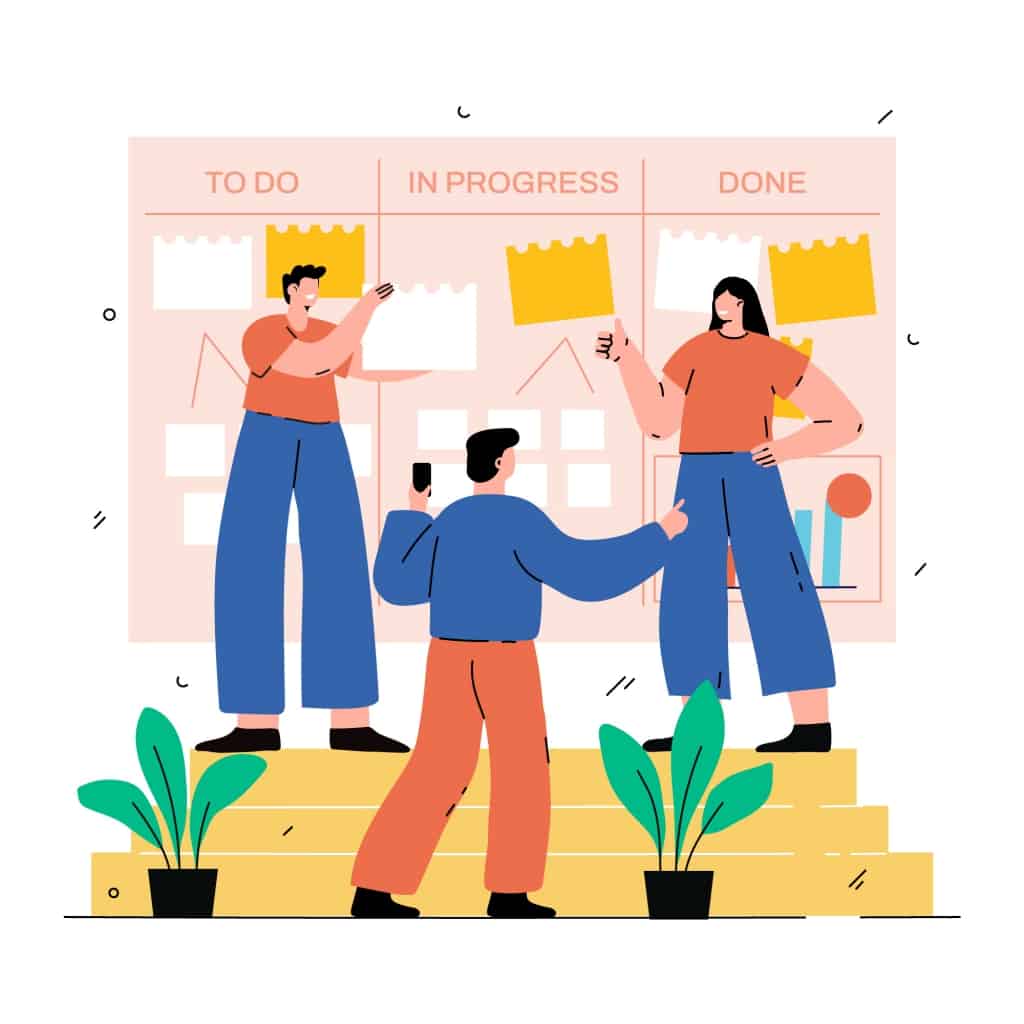
What is Kanban? Using Kanban can greatly enhance workflow and project management. Here are some practical tips to make the most of Kanban:
Embrace Your Current Way of Working:
Use Kanban with your current tasks and processes, adjusting it to fit how your team already does things. Kanban is not as strict as some other methods; it works well with your team's usual way of getting things done.
Make Changes Gradually:
Don't make big changes all at once. Kanban likes small, step-by-step improvements. This way, your team can get better slowly and keep making good changes over time.
Respect How You Work Now:
Kanban fits into your team without messing up how things are already done. It understands and values your team structure, roles, and responsibilities. If your current way of doing things is good, Kanban helps make it even better.
Leadership from Everyone:
Kanban doesn't need orders from the top. It lets anyone in the team suggest improvements or take the lead on new ideas. Every team member can share thoughts, come up with new ways to work, and be a leader in making things better. It's all about getting better a little bit at a time.
By sticking to these ideas, Kanban can easily become a part of how your team works, making things better step by step and letting everyone on the team contribute to making positive changes.
Frequently Asked Questions
What is Kanban in Simple Terms?
Kanban is a visual system that helps teams manage work by visualizing tasks on a board, making it easy to track progress.
What are the 4 Principles of Kanban?
- Visualize Work: Display tasks on a board.
- Limit Work in Progress (WIP): Avoid overloading the team.
- Manage Flow: Keep tasks moving steadily.
- Make Policies Explicit: Clearly define workflow rules.
What is Kanban in Agile?
Kanban is a flexible part of the Agile framework, focusing on visualizing and optimizing workflow.
What is Kanban vs Scrum?
- Kanban: Works in a continuous flow.
- Scrum: Works in fixed timeframes (sprints).
Ref: Asana | Business Map
